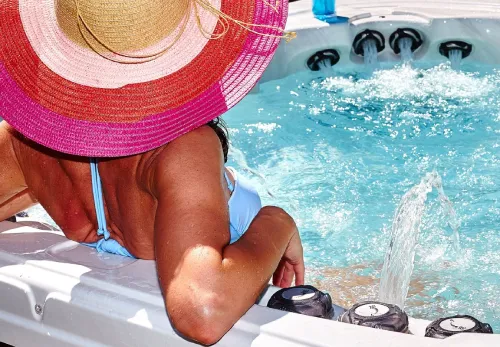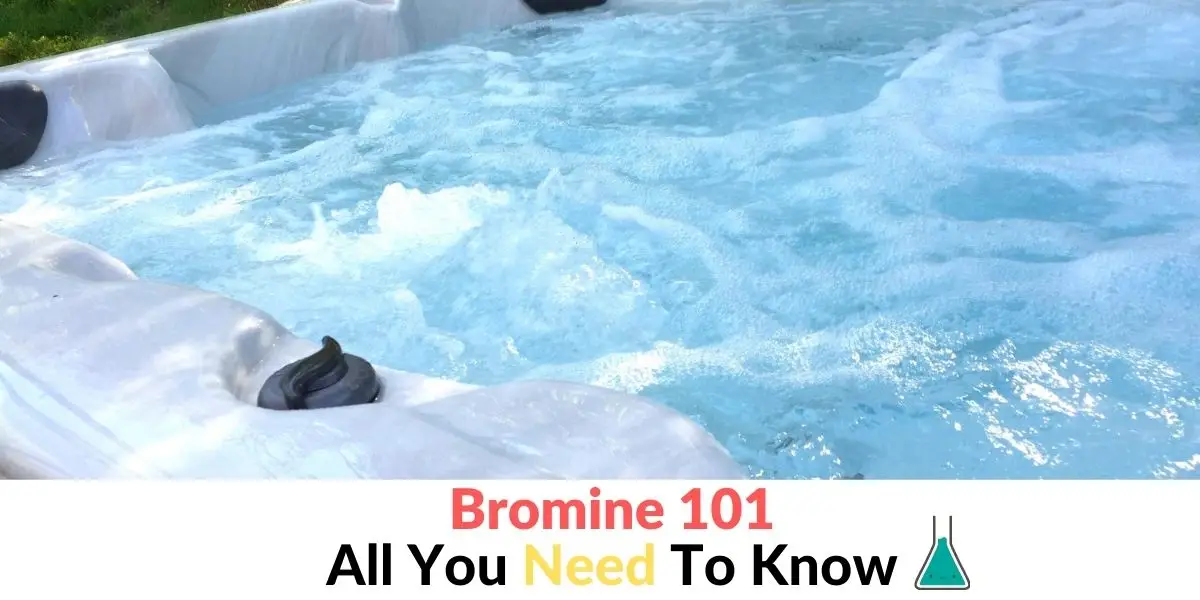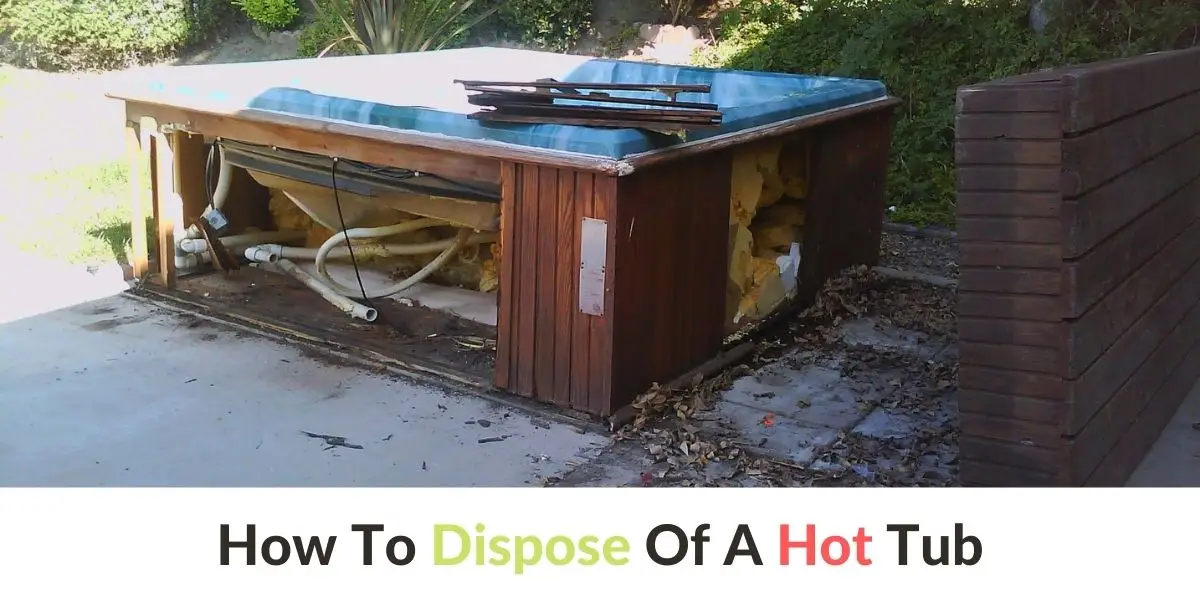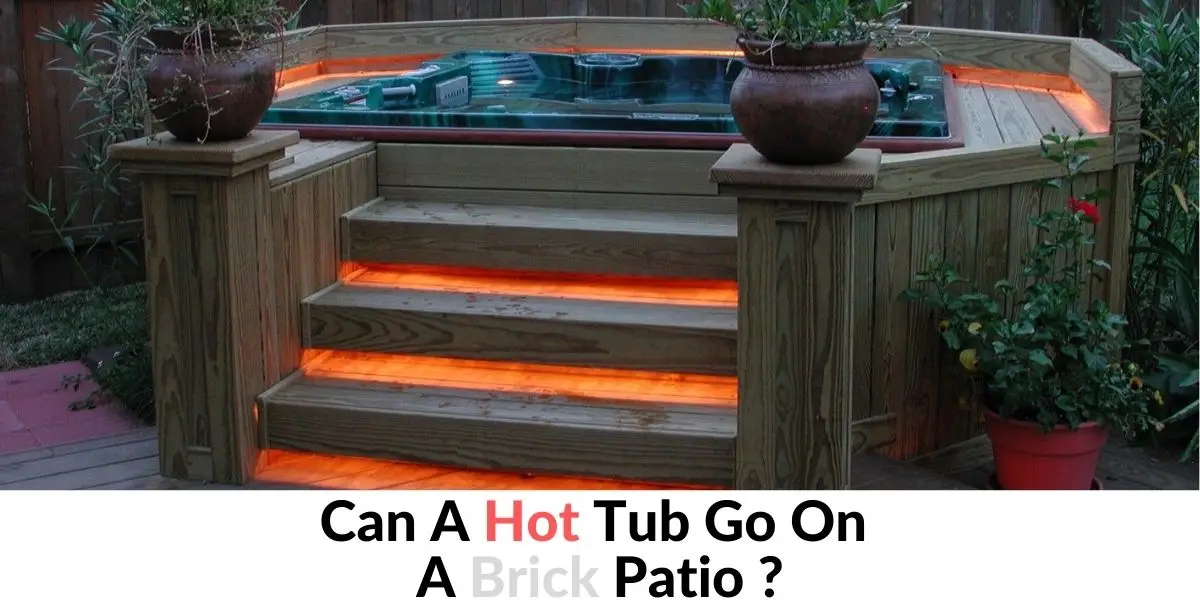Is It Ok To Put A Hot Tub Indoors? – Watch Out For This
I’ve been an owner of an indoor hot tub for close to ten years now. This is after I’d had enough of the outdoor one for several reasons. Based on my experience of shifting from an outdoor to an indoor hot tub, I believe I can authoritatively answer the question, is it ok to put a hot tub indoors?
Hot tubs can be used indoors.
You can put your hot tub pretty much anywhere you want in or around your house. However, you need to be aware of several things if you choose to install a hot tub inside.
The following are the considerations you need to put in mind when putting your hot tub indoors:
- Condensation
- Drainage and flooring
- Water access
- Access to getting the hot tub and out
- Chlorine alternatives
Condensation
Condensation is likely to happen especially on your windows and walls around the tub. This is because of the varying temperatures inside and outside the tub. Obviously, the hot tub will be hot while the room temperature will likely be colder.
This will probably not be an issue with your hot tub if it has an insulated cover. When not using the tub, you’ll likely cover it thus preventing condensation from happening. If you don’t have a cover, then condensation will most likely be an issue.
If you’re installing your hot inside a pool hall, then condensation will also not be an issue because of an air handling unit.
To combat all the aforementioned issues, it is prudent to consider installing a high-tech kind of ventilation. This goes miles to balance the temperatures inside the room hence preventing any form of damage. Ceiling fans are effective at providing great circulation indoors.
Installing a vapor barrier is also necessary to ensure your wall studs do not dry rot. Because of the steam environment inside, it would be wise to be cautious with the kind of walls you install. Water-resistant types of drywall such as green board or rot-resistant wood such as cedar are excellent choices.
Drainage and Flooring
Another important aspect that you need to consider when installing an indoor hot tub is drainage and flooring. When climbing from your hot tub, some water will get to the floor. For this reason, avoid slippery flooring.
The kind of flooring you choose should not only maintain excellent drainage but must also have great traction when wet.
Because of their proneness to rot, you shouldn’t even consider wood and carpet surfaces. Another terrible option would be Astroturf because water seeps beneath it.
The best flooring option is non-slip, matte-finish tiles. For effortless clean-up and drainage, ensure you put up a floor drain.
Water Access
Most hot tubs do not require any external plumbing. However, while that might be the case, effortless access to water to fill the hot tub is still necessary. When planning the indoor space to slide your tub into, consider having a water spigot close by.
Access to Getting Hot Tub in and Out
Well, this might not seem like a big of a deal to many people but actually is. You should consider how to get your hot tub in and how to get it out.
Quite often, I’ve seen people that have installed a hot tub during the build of a house. This is great as all they need to do is lift it right into place and build around it. It is superb when the hot tub is working but not so great when you need it out.
Of course, the last thing you want is to cut your hot tub into pieces just to get it out. You also don’t want to remove a wall or window to get it out.
Therefore, I’d suggest that you not only consider how to get it in but also out when installing your indoor hot tub. The best way to do it is to have a door that fully opens. You can install a garage door or patio door that opens fully.
A glass bi-fold door can also be handy in such a case. Simply put, you just need a door or something that folds or opens completely for purposes of getting your indoor hot tub out when need be.
Chlorine Alternative
Within an enclosed area, the smell will be compounded. This is especially true if you use chlorine in your hot tub. So how do you run yours with chlorine?
One of the alternatives you can consider is bromine. In addition to boasting less smell, it is also friendly to the hair and skin.
You could also consider odorless solutions such as Silk Balance.
Can you Put a Hot Tub Inside a House?
Can You Put Your Hot Tub Inside A Greenhouse?
Have you ever wondered if you could put your hot tub inside your greenhouse. How would the hot tub benefit by being placed in a greenhouse? What would happen with the plants inside the greenhouse? I have a cool article talking about the pros and cons of having your hot tub in a greenhouse. You can read it here.
Just as you can do it outside, you can also install the hot tub inside a house. Installing a hot tub indoors can be a great solution if you intend to enjoy your privacy away from prying eyes feeling more comfortable. Another benefit is that you can use it regardless of the time of the year and without having to worry about external influences such as wind or snow, or getting leaves or dust inside the water. You can install your hot tub either in the basement, garage, bathroom, or some other corner of your house that is mostly unused. Of course, there is a set of important indoor changes that need to be done beforehand.
The first thing to consider before installing an indoor hot tub is to choose the right area in your home. Pay close attention to the floor type. Avoid any flooring that could get slippery when wet. You will need to remodel the floor, the walls, as well as the ceiling, with waterproof materials. Another arrangement that needs to be done is the drainage for easy cleanup and draining the water, which overslips when you get inside. Because of the warm and moist air that is caused by the hot tub, among the most important things is the ventilation system. Ventilation provides fresh air to the room and prevents mold or mildew from occurring in your hot tub room.
Although installing a hot tub inside your home requires more planning and alterations, it can be a real oasis pleasure once it is set up and finished.
What do you Need to Have a Hot Tub Indoors?
If you are looking for an indoor hot tub installation, there are several things that you have to look into:
- Foundation and structural support
- Flooring
- Drainage and water supply
- Water-resistant building materials
- Ventilation
The first and foremost thing to do to install a hot tub inside a house is to reinforce the concrete slab support because you want to avoid any additional repairs if your floor cracks under the weight of the hot tub. You should also alter any doorways or hallways or some other area of your house to deliver your hot tub to the desired place.
Certain floor materials get slippery when wet and they do not stand up well to moisture. To avoid this situation do not use a floor made out of wood or any other material that could rot or distort. Carpeting is a definite no, because it retains water and moisture and can cause mold. Make sure that your flooring is made out of non-slippery waterproof materials.
This applies not only to the flooring but also to the walls and ceiling and any other object that could be destroyed by over moisture. Try remodeling your walls using glass, cedar or concrete, because these are easier to maintain and prone to rotting and moisture retention.
Another essential thing to do before putting a hot tub indoors is to install plumbing so you have proper access to a water supply. Install a faucet with an attachable hose that will allow you to fill in your tub with water and maintain its levels. Now that you have a water supply, you also need a floor drain to easily clean the room and drain the water from the hot tub.
The last thing, but equally important, is the installation of the ventilation system. Proper ventilation exchanges the steamy air with the fresh one and prevents mold or mildew from occurring in the hot tub room. You need to choose fans that are rust-resistant and do not make much noise, because hot tubs are made for relaxation and enjoyment.
Do you Need Ventilation for a Hot Tub?
Hot tubs create a large amount of humidity in the room, they are practically machines producing moisture, hence it is crucial to install a ventilation system to control humidity and condensation levels. Not having ventilation inside the hot tub room might cause many sorts of mold and air quality issues.
Ventilation should be strong enough to quickly replace moist air with fresh air. Install quiet, rust-resistant exhaust fans that will take out the humidity from the room to prevent any water or mold damage. Adding ceiling fans will help lower the room’s temperature after the tub is being used and quickly circulate the air making the hot tub comfortable during usage.
Another way to vent the area is to open any windows or doors that you might have to change the moist air in the room and supply it with new air. This is also the cheapest and the most effective ventilation system during the summer days, however, it is not very suitable in the winter when it is extremely cold outside.
To prevent creating moisture and humidity in the room when the hot tub is not in use, you could consider using an insulated cover to keep the heat in.
Some people even put certain plants that are believed to be feeding on humidity thus improving indoor air quality.
What do you Put on the Floor of a Hot Tub?
A strong stable ground is what you need when installing a hot tub inside your house. An excellent base would be a concrete slab because this material is very sturdy and long-lasting. The reason why you need a solid foundation for your hot tub is because it tends to be really heavy when filled with water. This weight puts a lot of pressure on the floor that is beneath your hot tub. A full hot tub might weigh over 5000 pounds, thus if you plan to install it somewhere in your house, besides the basement which already has sturdy flooring, your floor will probably require some reinforcement.
The best solution for any hot tub placed inside somebody’s home, as has previously been said, is concrete. However, the concrete has to be leveled to avoid any issues that might occur and obstruct the hot tub’s structural integrity. It also has to be of adequate thickness to support its weight when full of water and the size of the slab should be at least the size of your hot tub’s if not slightly bigger.
Nowadays, many hot tub owners use ready-made synthetic pads which are cheaper and there is no need to pour concrete and wait for it to dry first before installing a hot tub.
Synthetic pads are prompt and easy to set because their pieces interlock and they can be bought to match the size of your hot tub. Additionally, in case you change your mind and want to move your hot tub elsewhere, it can be easily dismantled and set up, and accommodated again to meet your needs.
Can you Put a Hot Tub Upstairs?
Basically, you can place your hot tub wherever you want inside your house and even to a higher floor. It might be a little harder to set due to the sheer weight and shape of your hot tub and you would probably need to use an adequate technique to install your little piece of heaven upstairs. Before deciding which technique suits you best, you should take into consideration the weight and size of your hot tub as well as how high above the ground you want to install it and where. Based on the information you have at your disposal, there are three possible methods to lift your hot tub upstairs:
- Using a winch
- A crane, or
- A helicopter
A winch is a mechanical lifting device that consists of a rope, wire, or cable that when attached to a hot tub or any other heavy object makes it possible to move to the desired place. Before using a winch take some precautions first to protect the tub from scratching the sides. The path to the area where you want to put your hot tub needs to be wide enough. Remove any possible obstructions that could damage the hot tub such as railings or fences. Beware of possible overhead obstructions, too. If any, obstructions need to be high enough to be able to get your hot tub pass under them. One very important issue to consider is corners. You have to do proper calculations to make sure that your hot tub can safely pass angles.
Using a crane would be a perfect method if you want to put your spa on a terrace or a roof. Of course, you should take care of any trees or power lines that could get in the way.
Finally, if none of the options above is viable, you can hire a helicopter lifting service that will safely deliver your hot tub on a higher deck.
Can I Put a Hot Tub in my Garage?
Installing a hot tub in a garage is feasible, but requires some real planning and preparations. Even without a hot tub, garages tend to be susceptible to high levels of humidity and moisture.
First of all, one of the most important things that you need to do is to install a good ventilation system. Proper ventilation will reduce the chances of mold growth. It will also protect the structure of the garage itself. If possible, install some big windows to help the area ventilate better. Be sure to use the covering when the hot tub is not in use to prevent and reduce the amount of water evaporation. When covered, heat will be retained inside the tub thus reducing electricity consumption as well.
Additionally, you should paint all walls inside the garage with enamel full gloss paint for the best protection against the moisture that will keep mold from growing. To prevent corrosion you should protect any electrical appliances that are placed close to the hot tub.
However, based on many experiences, no matter how hard you try to protect the garage area to prevent issues caused by moisture, you will have to deal with mold because it will appear eventually.
After you have carefully considered the ventilation installation, other things that you need to take care of are drainage and suitable flooring. You should also install a tub, if there is none, for easier water access.
Why You Should Consider an Indoor Hot Tub?
Having established that it is okay to install a hot tub indoors, I think it is prudent to learn what are some of the advantages of having your hot tub indoors over outdoors.
Well, indoor hot tubs are better than outdoor ones because of:
- Privacy
- Convenience
- Protection
Privacy
Privacy is the major advantage of owning an indoor hot tub. Regardless of your neighborhood, it is important to be private in some of your affairs. This is particularly true if other properties overlook your garden or outdoors.
Convenience
Convenience is another strong attribute of indoor hot tubs. With one, you don’t have to leave the house to access relaxing and warm water.
Protection
Unlike with outdoor hot tubs that you have to be constantly worried about the weather, with the indoor ones, that’s the last thing you’ll do. It will never be too sunny or hot to wear sunscreen or even too wet or cold to freeze in water.
Your cabinet and cover will always remain undamaged by harsh elements. On top of that, you’ll also not have to worry about airborne allergens.
Final Words
Is it ok to put a hot tub indoors? Yes, it is.
The only thing you need to be careful about are the factors I highlighted above. When you take care of everything laid out on this primer, you can rest assured that you’ll enjoy an incredible hot tub experience indoors.















